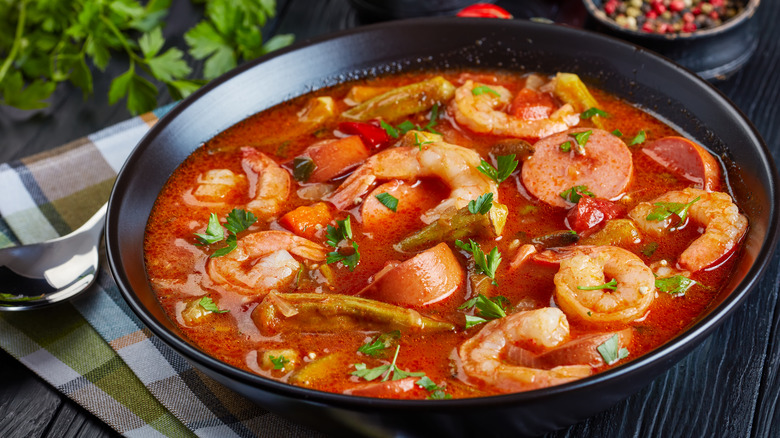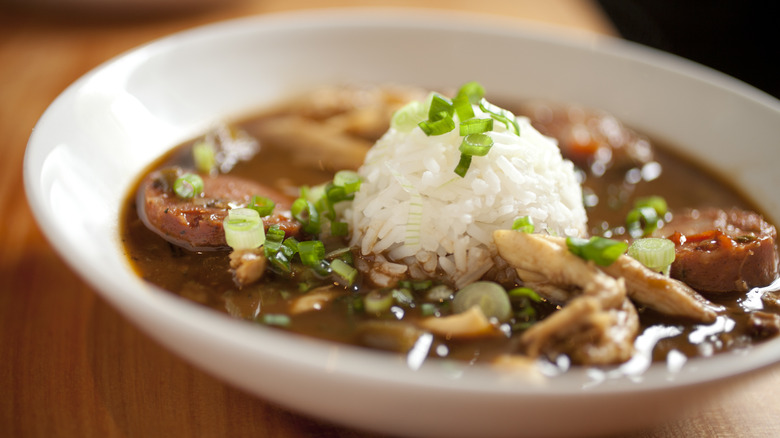The Reason You Might Want To Avoid Using Butter In Your Gumbo
A whole lot of chefs (some with staggering amounts of expertise) still argue over the best ways to make gumbo. The intricacies center on things like dark or light colorization, thick or thin consistencies, Cajun or Creole interpretations, and whether or not to include tomatoes (yes for Creole and no for Canjun). But, nothing is more pivotal and defining than the ever-important roux. It's what serves as the base for any real gumbo; you either get it right or toss it out and start again. That's where butter comes into the conversation.
Unlike French sauces created from butter-based roux, such as creamy white béchamel or hollandaise, gumbo requires a heartier roux that darkens as it builds. Rather than simply serving as a thickener or binding agent for smooth texture, Cajun and Creole cooking puts roux on the flavor frontline. The longer the flour and fat cook, the darker the mixture becomes, ranging from a golden peanut butter color to hues resembling rust or cocoa. As the colors deepen, so does the flavor, especially if using a roux-defining smokey bacon fat.
Butter, on the other hand, burns relatively quickly, limiting its tolerance to heat exposure. Given the risk of butter scorching and ruining the delicate color/flavor component of your earthy Louisiana gumbo, you might want to avoid it altogether. That said, many gumbo recipes do specifically call for butter, especially in lighter Creole-style gumbos. There are some valid reasons for that.
Butter-based gumbo roux requires patience and skill
When making gumbo, it's important to understand that the difference between one roux and the other comes down to its two ingredients: flour and fat. The flour is a given, preferably the old fashioned all-purpose white kind. The other roux-making choice comes down to which kind of fat to use for blending. The most popular options are oil and butter or, less frequently, bacon fat or a gamey alternative such as duck fat.
Despite the danger of butter burning too quickly, a butter-based roux does impart smooth texture and rich complexity to gumbo, giving it a lighter color and slightly nutty flavor similar to classic browned butter. Since a butter roux requires less cooking time, the flour breaks down more slowly, so you'll generally have a thicker roux and use less of it for a soupier gumbo. That's especially true when adding other popular gumbo ingredients such as okra and file powder, which are natural thickening agents.
In a Creole gumbo recipe, the tomatoes will also add water to the mix, playing into that delicate balance of hearty texture and rich flavor. With a bit of patience and a desire to master the art of Louisiana-style roux-making, using butter is still a viable option for making gumbo. You just need to pamper it a little, coaxing out that rich buttery flavor using controlled heat while developing a practiced eye for when it's about to "turn and burn."

